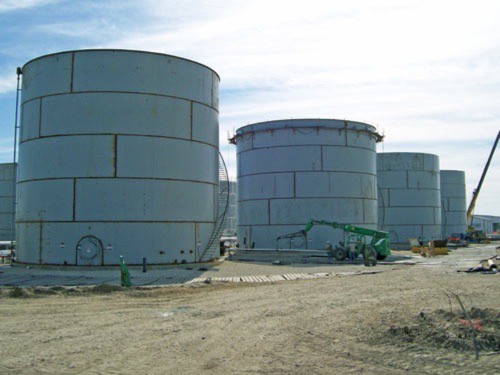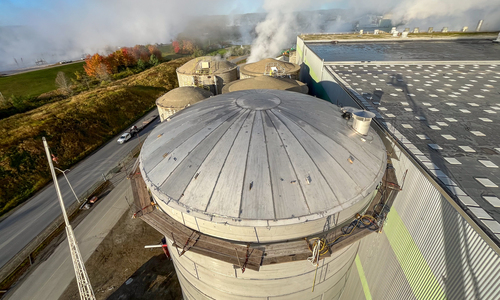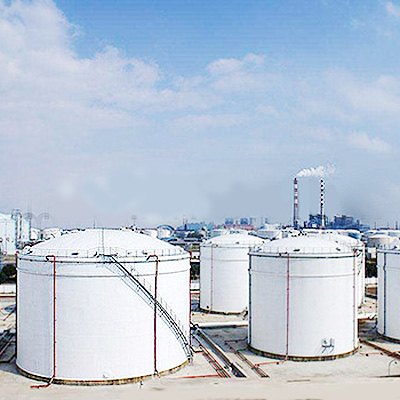A Detailed Check Out the Installation Refine of Welding Evaluation Techniques
Welding assessment is an essential process that guarantees structural honesty and security. The setup of examination strategies involves numerous systematic actions, each indispensable to accomplishing reliable results. From preparation and device selection to performing non-destructive and aesthetic tests, each stage needs careful attention. Comprehending these treatments can considerably boost high quality guarantee in welding projects. What challenges occur in implementing these strategies, and exactly how can they be properly attended to?
Comprehending the Significance of Welding Examination
Welding examination is an important part of guaranteeing architectural integrity and safety and security in building and manufacturing processes. This method involves examining welded joints for flaws, guaranteeing that they meet certain criteria and regulations. By methodically evaluating weld top quality, assessors can identify issues such as cracks, gaps, and incomplete fusion, which can endanger the toughness and resilience of frameworks.
The importance of welding evaluation extends beyond instant security issues; it assists protect against expensive failings and prospective threats in the lengthy term. Efficient assessment techniques foster conformity with sector requirements, thereby enhancing the overall dependability of welded components. Additionally, a durable evaluation procedure adds to keeping the credibility of makers and contractors, as it assures clients of the quality of their projects. Ultimately, understanding the relevance of welding examination is vital for advertising safe construction techniques and guaranteeing the durability of vital framework and products.
Choosing the Right Devices for Evaluation
When picking the proper devices for inspection, it is necessary to consider the particular demands of the welding process and the products entailed. Different evaluation methods, such as aesthetic, ultrasonic, and radiographic screening, necessitate distinct tools customized to their unique needs. For visual assessments, tools like magnifying calipers and glasses are vital for assessing weld top quality. Ultrasonic screening calls for specialized devices efficient in transmitting and obtaining sound waves to discover internal defects. Radiographic testing, on the various other hand, makes use of X-ray or gamma-ray sources together with delicate movie or digital detectors to reveal inconsistencies.
Additionally, individual safety equipment (PPE) is necessary to ensure the safety and security of assessors throughout assessments. Picking the right devices not only enhances the precision of inspections but likewise adds to the overall integrity and safety and security of the welding job. Consequently, a complete understanding of available tools and their applications is essential for efficient welding assessment.
Getting ready for the Assessment Refine
Prior to launching the examination procedure, it is vital to establish a comprehensive plan that outlines the range and objectives of the assessment. This plan should consist of details requirements that specify what constitutes acceptable quality in the welding job being inspected. Determining the appropriate codes and criteria is important, as they will direct the inspection standards and methods.
Furthermore, personnel associated with the assessment should be adequately educated and accredited in welding evaluation techniques to assure reliability and precision. A checklist can be helpful in arranging the numerous facets of the examination, ranging from devices preparedness to environmental conditions that might impact the evaluation.

Logistical considerations such as scheduling, offered resources, and communication between group participants should be resolved. By preparing systematically, inspectors can boost the effectiveness of the evaluation and make sure that all essential factors are appropriately considered before waging the examination itself.
Carrying Out Aesthetic Inspections

Carrying out visual inspections is a crucial action in the welding assessment process, needing mindful prep work to guarantee reliable examination. Assessors must recognize with vital defect indicators that can indicate possible concerns in weld quality. By concentrating on these aspects, one can boost the overall dependability of the examination outcomes.
Getting Ready For Visual Assessment
Visual assessment acts as a crucial primary step in the welding evaluation process, guaranteeing that any potential problems are determined early (API 650 Welding Inspection). Proper prep work is essential for effective aesthetic examination. Assessors must start by assessing relevant documentation, consisting of welding procedures and specs, to recognize the job needs. They should gather required devices, such as magnifying glasses, flashlights, and suitable individual protective equipment (PPE) An extensive assessment of the inspection location is essential; inspectors should confirm it is tidy and totally free of obstructions. In addition, it is very important to establish suitable lighting conditions to enhance visibility of welds. By taking these primary actions, assessors can develop a setting helpful to recognizing inconsistencies and ensuring the integrity of the bonded frameworks
Secret Flaw Indicators
An extensive understanding of essential defect indicators is crucial during visual inspections to assure the top quality and security of welded joints. Assessors need to concentrate on specific signs such as splits, porosity, damages, and insufficient fusion. Cracks might appear as sharp lines and can endanger architectural stability. Porosity shows up as small holes that can deteriorate weld strength. Undercuts, which are grooves along the weld edge, can lead to tension focus. Incomplete combination indicates that the weld metal did not correctly bond with the base material, causing a weak joint. By systematically identifying these flaws, inspectors can establish conformity with market criteria and enhance the total integrity of welded frameworks, ultimately adding to more secure operational conditions.
Implementing Non-Destructive Checking Methods

Various non-destructive testing (NDT) strategies are important to ensuring the stability of welded frameworks without jeopardizing their functionality. These approaches enable assessors to assess weld top quality and detect issues without creating damage to the products being checked. Usual NDT techniques consist of ultrasonic screening, radiographic testing, magnetic fragment testing, and dye penetrant screening. Each method offers a particular purpose, attending to different kinds of imperfections such as splits, porosity, or incomplete combination.
Implementing NDT techniques calls for an organized approach, beginning with picking the appropriate technique based upon the materials and the nature of the weld. Educating employees in these techniques is important for accurate outcomes. Additionally, establishing clear treatments and criteria assurances uniformity throughout the evaluation procedure. By integrating NDT right into the welding Visit Website inspection process, organizations can boost the dependability of their items while minimizing prospective threats related to architectural failings. This proactive approach eventually contributes to keeping safety and security and top quality requirements in welded constructions.
Assessing and recording Assessment Outcomes
Effective paperwork and evaluation of assessment results are important components of the welding examination process. Exact records of examination searchings for serve as a recommendation for quality assurance and conformity with sector requirements. API 650 Welding Inspection. Assessors need to use electronic systems or structured types to log details such as the kind of weld, inspection methods utilized, and any discrepancies determined during the evaluation
Detailed analysis is essential once data is collected. This involves contrasting results against developed requirements to determine trends or repeating problems. Statistical devices might be used to evaluate flaws and evaluate their impact on general weld top quality.
Reliable interaction of searchings for to appropriate stakeholders is critical. Reports and summaries need to be succinct and clear, highlighting key understandings and referrals for rehabilitative actions. By systematically documenting and assessing examination results, companies can promote continuous improvement in welding techniques and boost product integrity.
Frequently Asked Concerns
What Qualifications Are Required to Become a Welding Inspector?
To become a welding inspector, one generally needs appropriate certifications such as AWS CWI, together with experience in welding techniques, knowledge of welding codes, and effectiveness in examination methods to assure top quality and security criteria.
Exactly How Frequently Should Welding Inspections Be Conducted?
Welding evaluations must be conducted consistently, usually after each weld is finished, and regularly throughout projects. Factors such as navigate to these guys job complexity, sector standards, and governing needs can affect the frequency of these assessments.
What Is the Cost of Welding Inspection Services?
The expense of welding inspection solutions differs significantly based upon variables such as job place, complexity, and size. Commonly, rates vary from $100 to $150 per hour, with additional costs for specialized testing and qualifications.
Exist Certifications for Welding Inspectors?
Yes, there are numerous certifications for welding examiners, including those offered by the American Welding Society (AWS) and the International Institute of Welding (IIW) These qualifications ensure examiners moved here possess the needed skills and knowledge for reliable evaluations.

How Do I Choose an Inspection Provider?
To pick an inspection provider, one ought to review credentials, experience, industry credibility, and client evaluations. Additionally, comparing service offerings and prices can aid guarantee the picked supplier fulfills details job needs successfully.
In addition, employees involved in the examination should be sufficiently trained and certified in welding assessment techniques to guarantee dependability and accuracy. Carrying out aesthetic evaluations is a vital step in the welding examination process, needing careful preparation to ensure effective evaluation. Aesthetic examination serves as an essential initial step in the welding examination procedure, assuring that any type of potential issues are identified early. Efficient paperwork and evaluation of evaluation results are crucial parts of the welding evaluation process. Welding examinations should be carried out regularly, typically after each weld is finished, and periodically throughout projects.